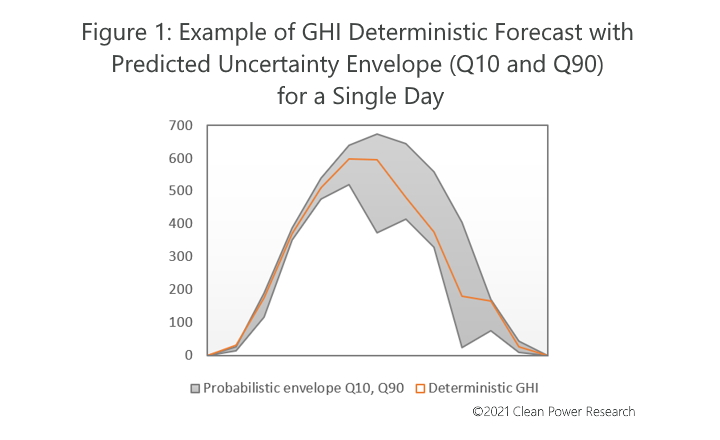Renewables have dominated the growth of new bulk power generation sources over the past five years. Driven by favorable policy, rapid declines in cost, improvements in technology, and fast time to market, as of 2019, solar power plants made up 29 GW of the existing utility-scale solar power capacity in the U.S., with another 367 GW in interconnection queues.
As solar PV technology continues to evolve, development has shifted focus from total energy delivered over long time periods to delivering grid services, where regulators and markets reward operators who can guarantee specific amounts of power at specific times. There have been notable advancements in concepts such as dispatchable PV and hybrid solar-plus-storage plants, giving rise to plant capabilities that increase the value of a solar generator to the electric grid. In the power purchase agreement (PPA) market in 2019, renewables won more often in head-to-head bids with conventional fossil fuels.
With this downward price pressure, solar project developers are taking steps to either streamline costs or design their plants to deliver greater value in grid support. A recent study from Berkeley Lab indicates that 28% of solar projects in the development queue have taken the latter approach by bidding in hybrid solar-plus-storage facilities.
Historically, solar plants delivered power when the sun was shining and were compensated for the energy they produced. Today, to maximize value, solar power plants need to rely on intelligent dispatch strategies to manage a complex set of factors, including:
- PPA requirements
- ITC grid-charging constraints
- PV production forecasts
- Market prices
- Storage degradation
- And more
These factors are now directly linked to plant profitability.
Adopting cutting-edge technologies to better serve customers
8minute Solar Energy (8minute), one of the largest solar and storage developers in the U.S., has focused their ongoing R&D work on advancing controls and the adoption of new, cutting edge technologies to improve the value of their smart solar plants with integrated storage.
In support of this research, Clean Power Research partnered with 8minute in an innovative pilot project to develop a neural network-based probabilistic forecast and to assess its value as an input to intelligent plant controls for one of 8minute’s solar-plus-storage plants.
“Innovation is core to everything that we do at 8minute, allowing us to engineer and develop the most advanced and cost effective smart solar plants. Rather than viewing storage as an add-on component, our team designs our technologies to work as one seamless, highly efficient system. We are excited to partner with Clean Power Research’s SolarAnywhere® team to assess probabilistic forecast value as an input to intelligent plant controls. The research may enable us to better serve our customers by further reducing the cost of energy and enhancing grid reliability,” stated, Luke Hansen, 8minute’s Vice President of Storage Engineering.
Clean Power Research expects the research to show that probabilistic Global Horizontal Irradiance (GHI) and PV production forecasts can be used to improve solar plant operation and demonstrate bottom-line impact.
The value of probabilistic forecasts: a contrast to deterministic GHI and power forecasts
A key benefit of probabilistic forecasts is that they explicitly account for uncertainties related to intermittency and variability due to clouds. This is in contrast to deterministic GHI and power forecasts, which only provide a single prediction. The added information helps PV plant owners better inform their decisions by including risk considerations.
For example, in the confidence interval probabilistic forecast in Figure 1 below, there is a predicted 10% chance that GHI will fall below the lower dark line (Q10), a 90% chance that it will be below the upper dark line (Q90) and therefore an 80% chance that it will fall between them, within the shaded “uncertainty envelope.” The orange line is the deterministic GHI prediction. The uncertainty envelope for the first, clear part of the day is much tighter than the envelope for the rest of the day, where partly cloudy conditions were expected. PV plant operators can use this information to adjust their operational decisions. For instance, when there is a wider spread of expected results, a plant operator might decide on a more conservative bid strategy.
The value of probabilistic GHI and PV production forecasts has been shown in research papers in the context of firm power generation, improving solar-plus-storage plant flexibility, optimizing bidding strategies, determining operating reserves and maintaining grid reliability. The present collaboration will prove how probabilistic approaches work in the field. To date, Clean Power Research and 8minute have been testing and improving the probabilistic forecast methodology and have seen some very promising results with at least one major west coast utility. As this pilot proceeds, more in-field data will become available.
Learn how you can put solar forecasting to work for you
Each solar project is unique, however, so the best approaches and results will vary. SolarAnywhere® now includes probabilistic solar forecasts among its wide range of accurate solar data and intelligence solutions. If you’d like to explore how SolarAnywhere forecasting solutions would work for you, contact us for a trial. You can learn more about the SolarAnywhere Forecast here.

